
Trekking vs Hiking
- Information
- By Sanchita Pokharel
Trekking vs Hiking: What’s the difference? This activity has the same characteristics as walking, but they are very different.
Many of us think trekking is just some fancy word for walking or hiking. No, it’s not. Trekking is an adventure where you have to walk for several days into the mountains, nature, or a remote location. The main traits of trekking are hiking all day and sleeping at teahouses along the trek, and continuing trekking until reaching your destination.
On the other hand, hiking is walking for several hours or a day on well-marked or established trails. In comparison to trekking, hiking is less difficult and adventurous, as you don’t have to walk for a long distance in a remote location and carry heavy loads. Trekking requires lots of planning and preparation. On the other hand, hiking can be done by general people with less planning and can be completed in a day.
Still confused or wanna learn about trekking vs hiking more thoroughly and in detail? If yes, keep scrolling. This blog will provide everything you must know about trekking vs hiking.
- What is Trekking?
- What is Hiking?
- Dissimilarity Between Trekking vs Hiking:
- Key Differences between Trekking vs Hiking
- Most Popular Trekking Routes in Nepal
- Most Popular Hiking Routes in Nepal
- Trekking vs Hiking vs Backpacking
- Trekking vs Hiking vs Climbing
- Trekking shoes vs Hiking shoes
- Trekking boots vs Hiking boots
- Trekking pole vs Hiking pole
What is Trekking?
Trekking is adventurous hiking that lasts for many days or weeks. They are very difficult without good preparation. Trekking involves walking over steep hills and paths. The trekking trails are mostly off-the-beaten-path roads, high altitude, forests, and valleys.
Therefore, for your safety, it is best to trek with guides and porters. This is because you will be carrying heavy loads as you have to stay along the trail for several days. Together with a heavy backpack, it will be difficult to hike a mountainous region for several days continuously. Sometimes you have to sleep in tents or mountain lodges with basic comfort and services. Trekking with guides provides extra assurance.
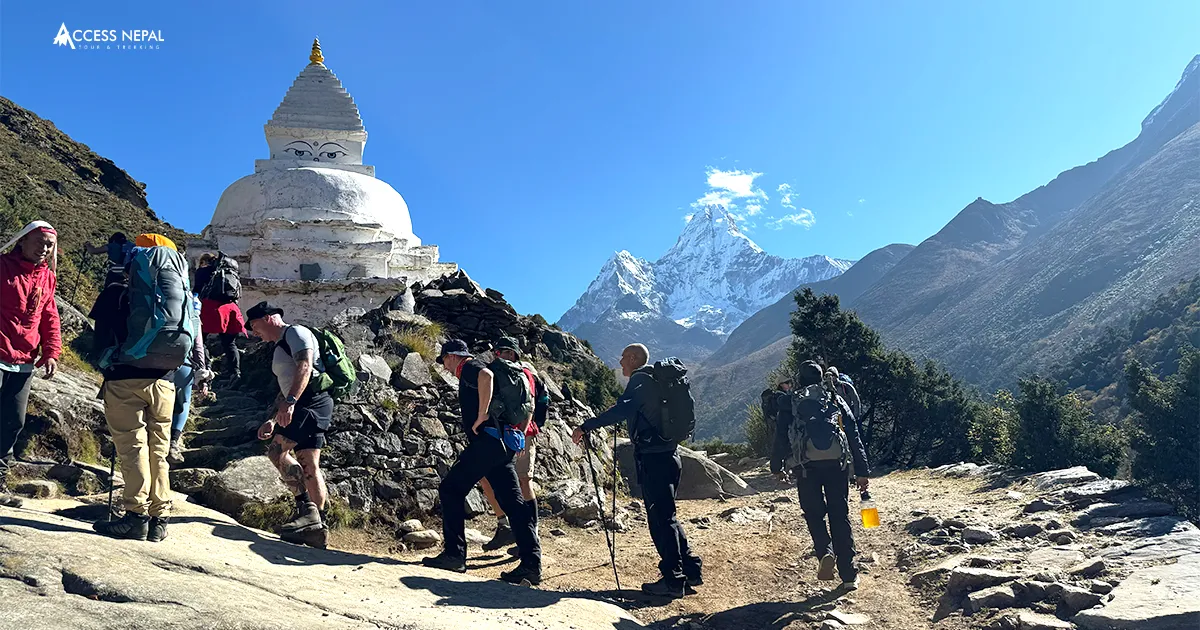
On the way to Everest Base Camp Trek
Trekking is more like visiting places that are untouched by modernization and where transportation is not available. Trek is for people who want to connect with nature more intimately. It’s just you and nature. You have to be mentally prepared, as you have to walk on rough mountain trails for more than 7 to 8 hours continuously for several days.
Though difficult, the best part of the trek is to be with nature in its rawest form. It gives a beautiful escape from a monotonous life of working 9 to 5 at a corporation.
What is Hiking?
Hiking is a level down from trekking. It’s like walking on marked trails which has some sprinkles of adventure. Hiking routes are mostly forest trails and mountain paths.
Hiking takes you for a walk inside the rolling hills. Hiking is simpler than trekking, so we can create a comparison between trekking vs hiking. Walking for several hours a day is hiking. During a hike, you don’t have to go far from where you live. Hiking routes are located near the city, where it’s like an excuse to get a dose of fresh air. It also works as a good exercise who don’t like going gym, and the gorgeous views work as a treat.
You don’t have to sleep in a tent or teahouse during the Hiking. The only things you need are good hiking shoes, a few snacks, and some water. It’s an adventure where you can walk to the viewpoint at leisure to clear your head and feel alive.
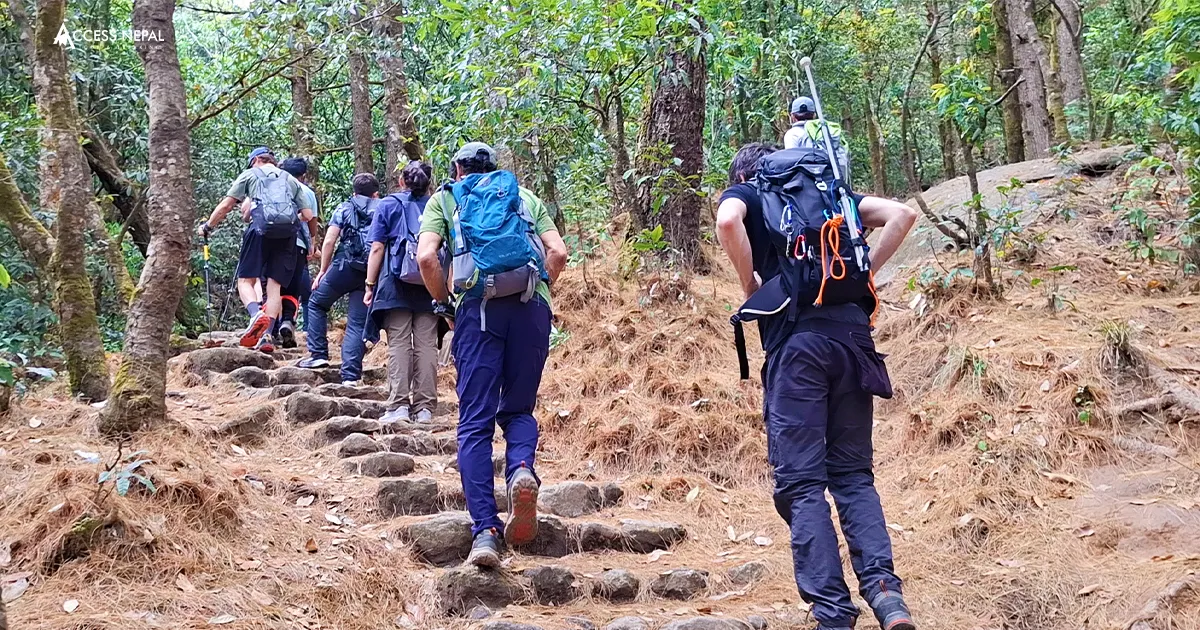
Hiking: Nature is cheaper than therapy
Dissimilarity Between Trekking vs Hiking:
When we see someone walking on a mountain route, we call it trekking or hiking before knowing the meaning. Whereas they have their very own definite meaning.
Hiking requires walking for a few hours or a day over marked trails. For hiking, you will need solid shoes. It can be done by beginners and those who love casual walking. Trekking is all about walking for multiple days through remote locations and over rocky, uneven trails. You have to be physically fit, must do prior training, detailed planning, and trekking gear.
- Hiking: Walking on a developed terrain for a day. (marked and well-trodden paths)
- Trekking: Walking for multiple days continuously through wild jungles and locations. (challenging hike over mountains or forests, camping overnight.)
In basic terms, hiking is a stroll on uneven trails, and trekking is hiking for several days on unmarked trails.
Key Differences between Trekking vs Hiking
It’s fun to compare trekking vs hiking with more one-to-one differences. Below, we have made some comparisons between Trekking vs Hiking for a clear understanding:
- Duration and Distance: Hiking = a few hours to a single day; Trekking = several days or weeks.
- Difficulty: Hiking is leisurely and suitable for fit people (even fit elders, too). Trekking is challenging and adventurous. It requires a guide along with excellent physical fitness and mental preparation.
- Terrain: Hiking routes are maintained and marked. Trekking routes are rough, unmarked, and sometimes have no trails at all.
- Gear & Planning: Hiking gear is simple and complete with hiking boots or sneakers as well as walking poles (optional). Trekking gear is heavy and serious, like sleeping bags, crampons for ice, tents, trekking boots, clothes, backpacks, trekking poles, and many more. You will need porters to carry them.
In summary, hiking is all about enjoying the views and is a simple activity to do during the weekend. Meanwhile, trekking is challenging and suitable for adventure lovers. If hiking pumps your heart rate, then trekking is pushing your limit to reach a targeted goal or destination.
Most Popular Trekking Routes in Nepal
If you are thinking of going on a trek, leave it to Access Nepal Tours and Trekking. We offer an all-inclusive package that takes you to some of the world’s most popular trekking destinations. While comparing trekking vs hiking, we compare the most popular trekking and hiking routes so that our readers can choose any one of our trending packages, and book them with Access Nepal Tour and trekking to create a lifetime memory.
- Everest Base Camp Trek: Being one of the top 1 trekking routes in the world, it doesn’t even require explanation. The EBC trek is the boss of all trekking routes. The adventure takes you to the base camp of the highest peak in the world, Mt Everest (8,8848m). Every view here makes your heart skip a beat. Starting from Kathmandu, the trail follows the classic route through the traditional Sherpa villages like Lukla, Phakding, Namche Bazaar, Dingboche, Tengboche, and Gorakshep. Trekking on the beautiful mountain trails, crossing the wobbly suspension bridges fluttering with prayer flags, and breathing the crisp mountain air that smells like snow and pine is just amazing.
- Annapurna Circuit Trek: Every stop of this trek has breathtaking views to offer. Trekking through the colorful rhododendron forests that smell like a sweet spring and the rocky passes, it goes on a loop. As your cheeks tingle with the crisp mountain air, the journey continues through the villages with red-roofed houses. When it comes to adventure, nobody tops the Annapurna Circuit trek. The main highlight is crossing the Thorong La Pass at 5,416m, surrounded by the panoramic views of Annapurna and Dhaulagiri. This trek is worth your every aching leg muscle.
- Manaslu Circuit Trek: This trekking route is the “hidden gem” of Nepal. If love takes trekking away from the crowd and wants to experience nature more closely, the Manaslu Circuit is the one. The trek takes you to the remote and peaceful mountain villages and jaw-dropping landscapes in their truest form. Trekking all day and night through traditional villages, yak pastures dotted with colorful prayer flags, and rugged passes like Larke La gives you the adrenaline rush.
- Langtang Valley Trek: Just an 80km distance away from Kathmandu, this trek takes you on a walk inside the forests filled with pine-scented air, rippling streams, and majestic peaks is worth every penny. This trek is short yet full of surprises. Without going far away, the Langtang Valley Trek gives you one of the best Himalayan adventures and experiences.
- Ghorepani Poon Hill Trek: This trek offers you the jaw-dropping sunrise view. It’s a short and sweet trek. The best part of this trek is hiking to the top of Poon Hill before dawn and watching the golden rays shining over the Annapurna and Dhaulagiri ranges. Drinking a hot coffee or at the top as cold air nips the nose, feels like you’ve reached heaven.
- Upper Mustang Trek: This trail takes you to another world, totally different from other routes; time has completely stopped in this remote, hidden kingdom. The sight of dessert landscapes, stone houses decorated with prayer flags clinging to hillsides, red cliffs, and Tibetan-Buddhist culture shines here.
- Tamang Heritage Trail: If you want to experience the trekking adventure along with the culture of the people along the way, this is the one. Starting from Kathmandu, this trek takes you through the traditional Tamang villages. This journey gives you the chance to experience the Tamang and Tibetan-Buddhist culture firsthand. Enjoying the scent of wood smoke and fresh herbs, the Tamang Heritage trek is a great introduction to Himalayan culture. Connecting with friendly local people and their history while trekking is truly a rare chance.
Most Popular Hiking Routes in Nepal
If you are short on time but looking for an escape into nature and are in a dilemma to choose trekking vs hiking, then here are some hiking routes worth visiting in Nepal:
- Poon Hill Hike: Though it’s a short hike but you don’t have to compromise on a Himalayan adventure. You wake up in the dark and climb Poon Hill, and enjoy the 360-degree panoramic sunrise views of the Annapurna and Dhaulagiri ranges. This hike is perfect to go with a partner, friends, and family.
- Nagarkot Hike: This hike is made for those who want to be in nature with less effort. It is close to Kathmandu, so you don’t have to worry about transportation fees. The trail passes through pine forests, small farms, and terraced fields. Once you reach the Nagarkot hilltop, you will be blessed with panoramic views of the Himalayas and the Kathmandu Valley. The sunrise and sunset views from Nagarkot are very famous among tourists.
- Dhampus Hike: Located near Pokhara, the hiking trail of Dhamous is surreal. Walking through villages, forests, and terraced fields where the air smells like earth after rain awakens all your senses. The views of Mount Machapuchare looming over the sky are 10 out of 10.
- Shivapuri National Park Hike: Don’t underestimate the hike through Shivapuri National Park as casual. Just outside Kathmandu, Shivapuri trails lead you through thick jungle where you can hear the whispers of trees. Hiking under the tall trees, crossing babbling waterfalls, birds singing, and peaceful silence overwhelm you.
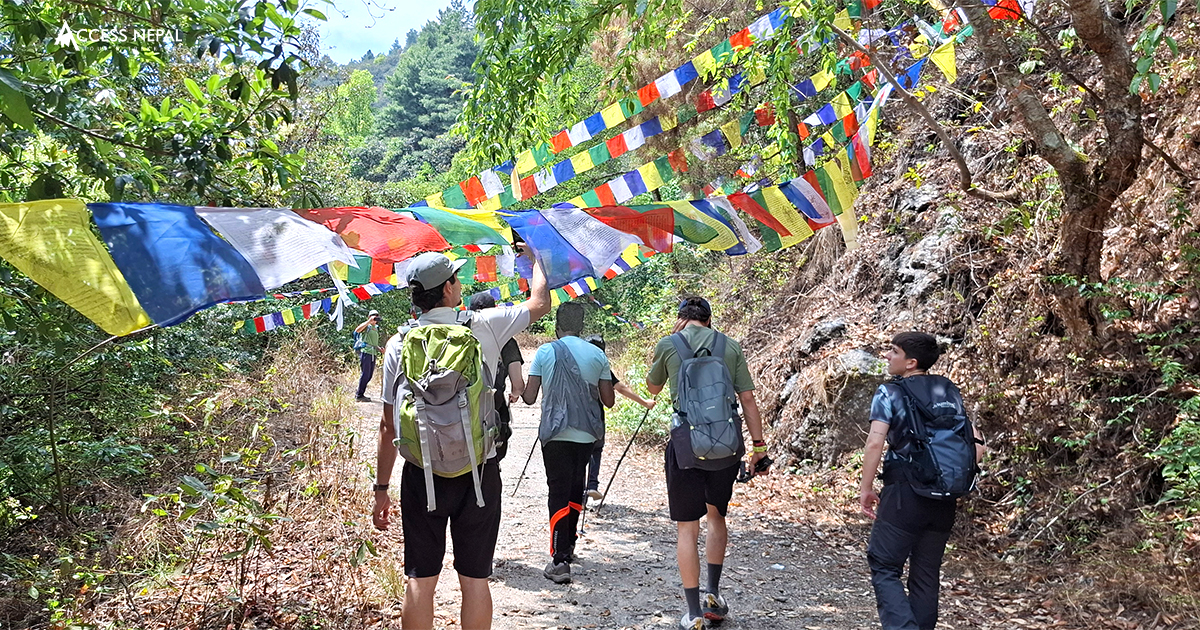
Hiking on the way to Shivapuri National Park
- Sarangkot Hike: This trail is another gem of Pokhara. You hike up in the early morning mist to see the stunning views of Annapurna and Machapuchare peaks. The sky bursting with golden sunlight is unforgettable. From the top, the view of the snow-capped mountain over the rolling hills and dreamy Pokhara city is truly amazing.
- Champadevi Hike: After a short hike, you will be surprised by the views of the Himalayan peaks covering the skies. Located in the southern part of the Kathmandu Valley, this hike is famous among nature and adventure enthusiasts. It is a safe trek to go with family and enjoy the views and greenery.
Trekking vs Hiking vs Backpacking
Many people get confused; all these activities involve walking, but the lines blur a bit here. For simple understanding, hiking is a day expedition, and backpacking is an adventure for one overnight or multiple days, carrying your own supplies for camping out, like a sleeping bag, a tent, etc. Backpack trekking is a budget travel. Throughout the trek, you will be traveling by carrying all your equipment in a single backpack.
Trekking is similar to backpacking as both activities include hiking for many days. The difference is, trekking is hiking for a longer day without carrying your supplies. Trekking leans towards more comfort as it uses guides, porters, and lodges. To be clearer on Trekking vs Hiking vs Backpacking:
- Hiking: Hiking for a single day, no camping.
- Backpacking: Hiking for multiple days, carrying gear in a single backpack, and camping overnight.
- Trekking: Hiking for several days with a guide and staying at teahouses along the way.
To summarize, trekking is a long-day adventure, hiking is a single-day adventure, and backpacking is a several-day adventure by camping along the way. Though expression might overlap but they work differently. However, these days, many travelers have standardized the meaning of trekking and backpacking, like saying backpack trekking, which implies budget travel.
Trekking vs Hiking vs Climbing
There is a wide gap in the difference between trekking vs hiking, vs climbing. You can say climbing is the hardest adventure among these. Just as its name implies, climbing is walking with both hands and feet. It is more technical and requires professionalism and special training. For example, Mountain climbing means reaching the top of its summit using special gear like crampons, a harness, ropes, safety gear, etc.
Climbing requires you to climb on the hills or mountains without any marked trail.
- Trekking and Hiking: It involves walking on the trails that are both well-maintained and unmarked. It doesn’t require specialized equipment like a harness and ropes. It is suitable for all physically fit people without any professional training.
- Climbing/Mountaineering: Crawling on the mountains and rocky hills by using technical gear and safety equipment like harnesses, ropes, crampons, belay devices, and many more. The falls one the field of sports. It requires rigorous training, professionalism, and skills. A climber uses their hands and feet at the same time.
To put simply, trekking and hiking are walking on the route, while climbing is ascending on the steep hills and mountains using climbing gear.
Trekking shoes vs Hiking shoes
Don’t think, why buy trekking or hiking shoes, just wear the sneakers. No, it’s because trekking and hiking are not like going on a morning or evening walk. It involves walking on various kinds of trails for several hours and days. Therefore, it required good footwear for safety and comfort. But what’s really the difference between trekking vs hiking shoes?
Trekking involves walking on rugged and rocky terrains for many days continuously. That’s why trekking shoes are rigid and sturdy to protect your feet. Trekking trails mostly include long distances, steep climbs, mud, and rocks; trekking shoes have thick soles. To protect your ankles and give extra support during continuous walking, it has higher ankle cuffs.
On the other hand, hiking shoes are a softer version of trekking shoes. They are lighter and flexible in comparison to trekking boots. As hiking trails are mostly well-maintained and established, they are less sturdy and rigid.
- Trekking Shoes: Heavy, rigid, thick soles with good ankle support to protect the ankle and feet from rocky ground. They are mostly available in waterproof.
- Hiking shoes: Lightweight, flexible, thin soles suitable for hiking trails. Hiking shoes are more agile.
Trekking boots vs Hiking boots
Don’t get confused with shoes and boots. They may sound like pasta and spaghetti, similar but different. Boots are heavier and adventure-friendly, unlike shoes. Though trekking vs hiking boots have similarities when it comes to sturdiness. However, they are quite different in character.
- Hiking Boots: These boots are suitable for a short hike that involves uneven terrain. They are still lighter than trekking boots but heavier than hiking shoes. They can be useful for one to two-day trips. Hiking boots are useful for moderate-level trails.
- Trekking Boots: These boots are perfect for a mountaineer and trekking in rough terrains. They are used for high-altitude trekking, multi-day adventures, and rocky or snowy paths. They usually come in high-cut to give ankle support. They have thick soles to protect your feet from sharp rocks and dangerous objects. They are heavy and made with good-quality materials for durability.
Trekking pole vs Hiking pole
Poles are extremely useful during a walk or trek. Do not think they are just some sticks. Both trekking vs hiking poles have clear differences.
A hiking stick, sometimes called a hiking staff, comes single. They are available in wooden and metal with height height-adjusting feature. Hiking poles are generally used for short walking distances and well-established trails. They are good for providing balance during the hike. Hiking poles are useful when hiking on flat terrain, along with light weight. Some can even double as a camera monopod, depending on the brand.
On the other hand, trekking poles are available in pairs. For convenience while packing, they are collapsible. They are needed for stability during the trek. Using the trekking pole also helps in strengthening the knees during the trek while carrying a backpack. Trekking poles are a must when trekking on rough trails. It has adjustable features like lengthening them downhill and shortening them uphill. Some poles even have shock-absorbing springs for safety, but they are quite expensive.
The given table gives you the comprehensive details on the difference between trekking vs hiking.
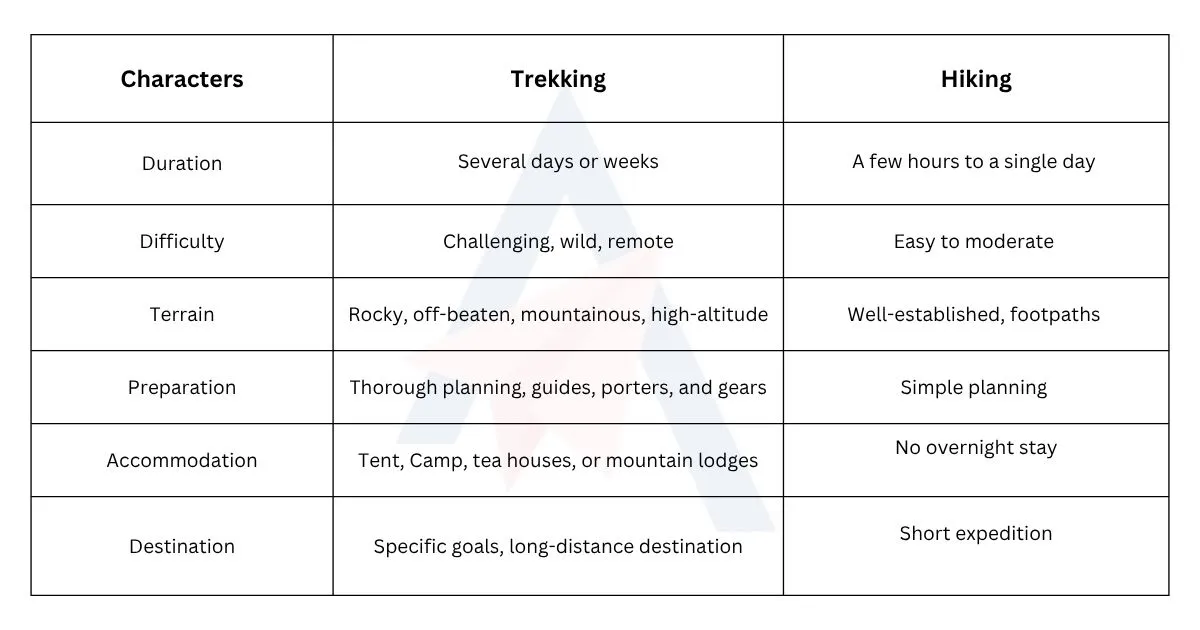
Trekking vs Hiking Summary Table
FAQs on Trekking Vs Hiking
What is the difference between hiking and trekking?
→ The difference between hiking and trekking is that hiking is walking on well-marked and established trails in a few hours or a single day. Whereas trekking is hiking for multiple days and weeks until reaching the specific destination. Hiking is easier, while trekking is challenging.
What is the difference between trekking vs hiking boots?
→ The difference between trekking and hiking boots is clothing materials, weight, and features. Trekking boots are more sturdy and made for walking on rough or icy terrains. Hiking boots are flexible and suitable for walking on well-established trails. Hiking boots are lighter in comparison to trekking boots.
Is a trek the same as a hike?
→ No, the trek and hike are different. Trekking is hiking for multiple days into remote high-altitude places. In contrast, hikes last for a day only. Trek is more challenging and requires extensive preparation, the help of other people, like guides, porters, and a travel agency.
Is trekking harder than hiking?
→ Yes, trekking is harder than hiking.
Which is more challenging, hiking or trekking?
→ Trekking is more challenging. It requires good physical fitness and prior training or experience. Hiking is moderate and simple.
Is hiking or trekking better for beginners?
→ Hiking is better for beginners. If you are a beginner but have good physical fitness, then you can do some beginner-friendly treks like Annapurna Base Camp Trek, the Mardi Himal Trek, and the Tamang Heritage Trail Trek.
Awards and Achievements
Access Nepal Tour and Treks has been recognized with TripAdvisor’s prestigious Travelers’ Choice Award for multiple consecutive years, reflecting our unwavering commitment to quality and clients’ satisfaction.











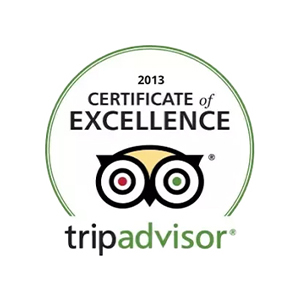

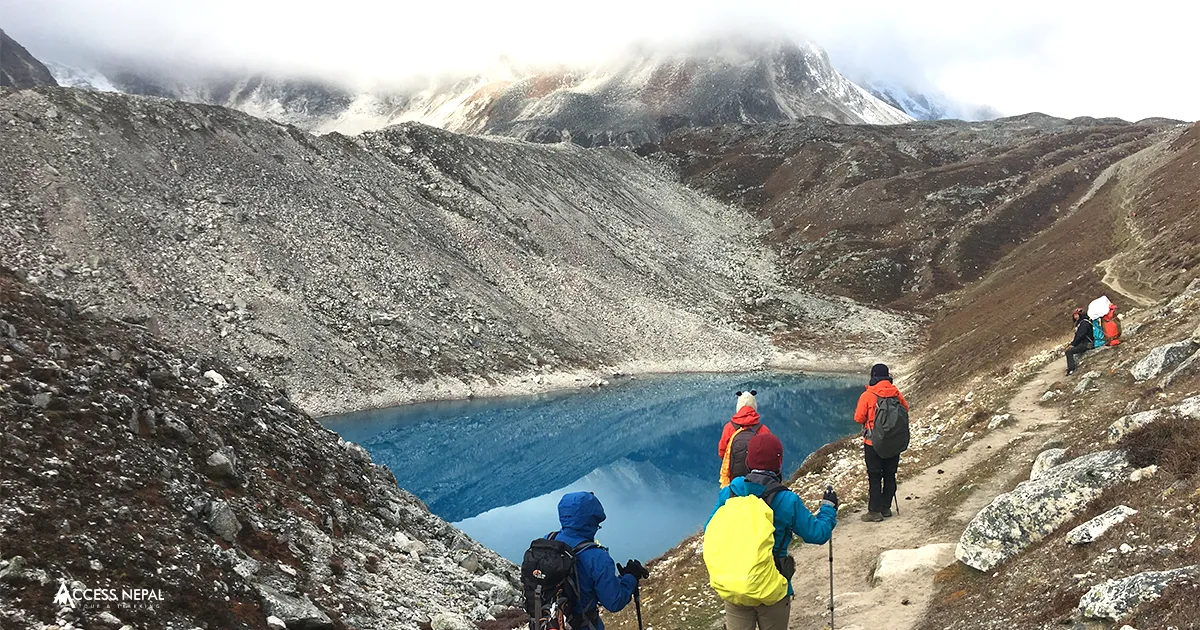
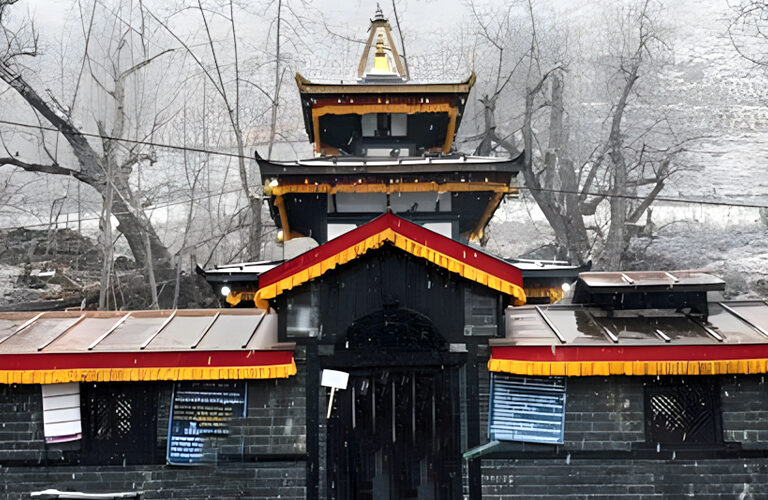
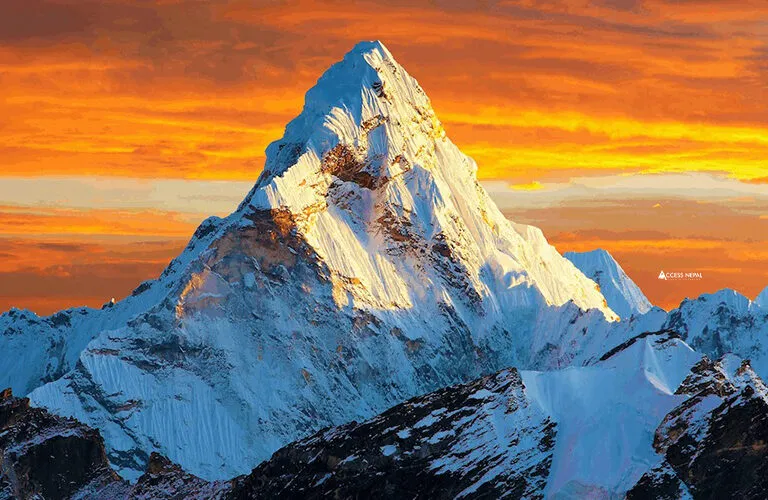
Leave Your Comment